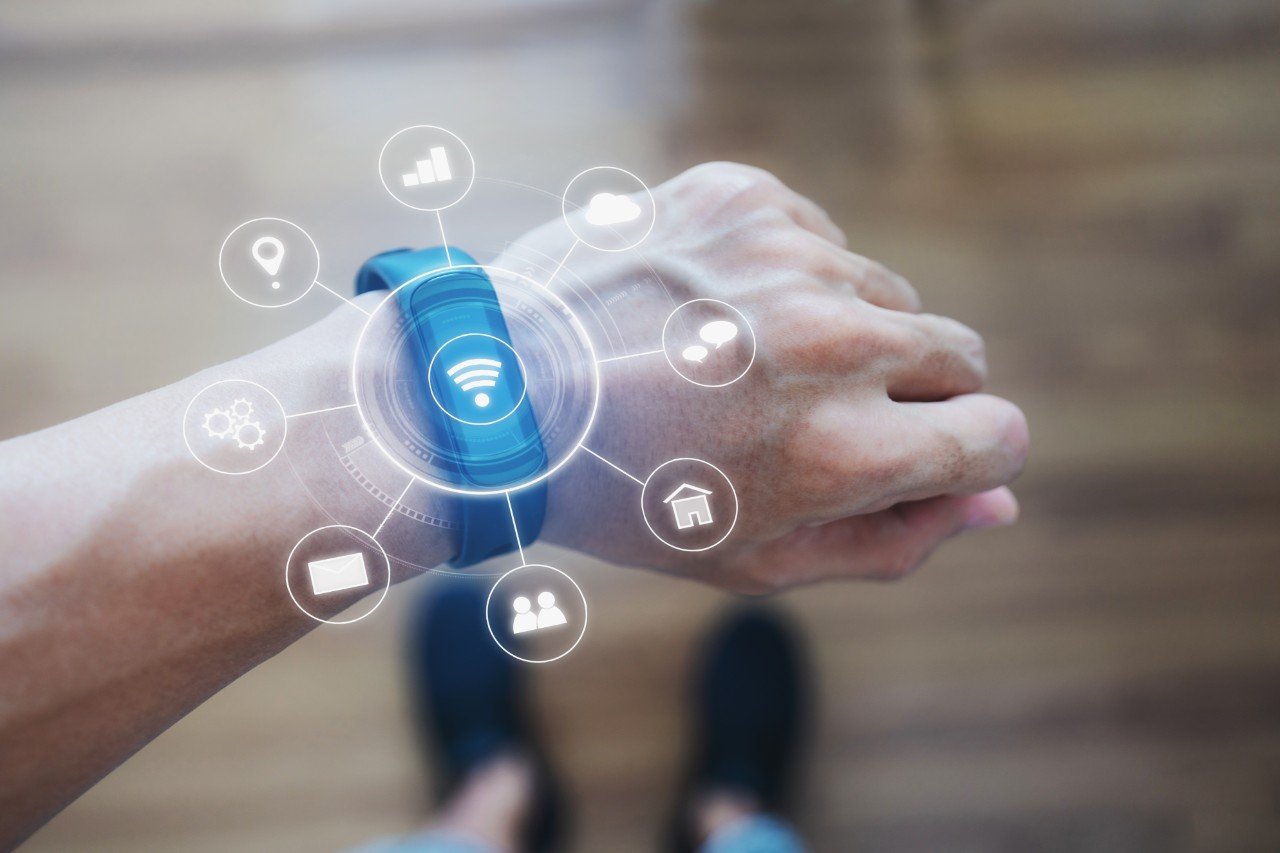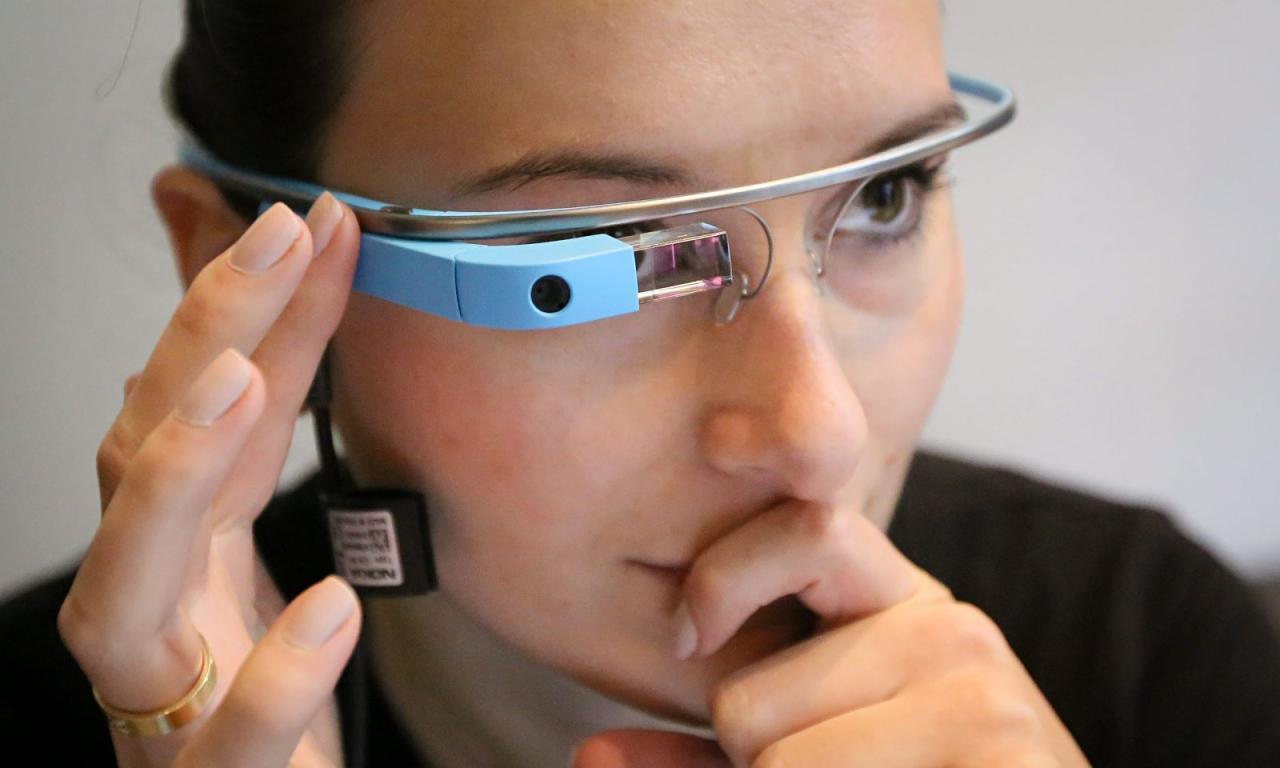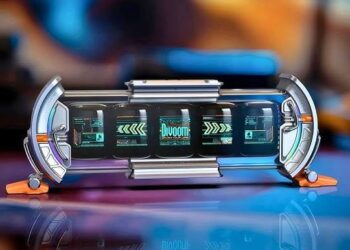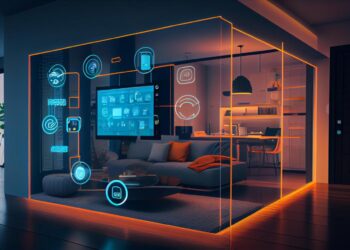The landscape of personal technology has undergone a seismic shift, moving beyond our pockets and onto our bodies. What began as rudimentary pedometers has blossomed into the sophisticated world of wearable technology, a dynamic and ever-evolving field driven by miniaturization, advanced sensors, and the ubiquitous integration of Artificial Intelligence (AI). These devices, from smartwatches to smart rings, offer more than just convenience; they are becoming essential tools for health monitoring, fitness tracking, communication, and even personal security, fundamentally altering how we interact with information and our environment. This comprehensive exploration delves deep into the fascinating realm of wearable tech, dissecting its core components, the transformative benefits it brings, the considerable challenges it faces, and the exciting future that lies ahead.
What Defines Modern Wearable Technology?

At its essence, wearable technology refers to electronic devices worn on the body as accessories, implanted in the user’s clothes, or even tattooed on the skin. These devices are designed to collect data, provide real-time feedback, and often connect wirelessly to other devices, such as smartphones, or directly to the internet. The “smart” in wearable tech comes from its ability to process this data, learn from it, and offer intelligent insights or actions.
A. Miniaturized Sensors: These are the bedrock of wearable tech, enabling the collection of diverse biometric and environmental data. Examples include:
- Optical heart rate sensors: Measure heart rate by detecting blood flow.
- Accelerometers and gyroscopes: Track movement, steps, sleep, and orientation.
- GPS: Pinpoints location for activity tracking and navigation.
- Electrodermal activity (EDA) sensors: Detect changes in sweat gland activity, often linked to stress.
- Electrocardiogram (ECG) sensors: Record the electrical activity of the heart.
- Blood oxygen (SpO2) sensors: Measure oxygen saturation levels in the blood.
B. Advanced Microprocessors and AI Chips: Tiny yet powerful processors within wearables handle complex computations on-device, often powered by specialized AI accelerators. This allows for real-time data analysis, pattern recognition, and more sophisticated functions without constant reliance on a connected smartphone.
C. Wireless Connectivity: Bluetooth is the most common for short-range communication with smartphones, while Wi-Fi and cellular (LTE/5G) are increasingly integrated for standalone connectivity, allowing wearables to send and receive data directly from the cloud.
D. Intuitive User Interfaces (UIs): Despite their small size, wearables offer diverse UIs, including:
- Touchscreens: Found on smartwatches for navigation and interaction.
- Voice commands: Leveraging AI-powered voice assistants for hands-free control.
- Haptic feedback: Vibrations and subtle nudges to provide notifications or guidance.
- Gesture control: In some advanced prototypes, specific hand or body movements can control devices.
E. Long-Lasting Batteries: A critical factor for user acceptance, ongoing advancements in battery technology enable wearables to function for days or even weeks on a single charge, despite their continuous operation and data processing.
The Multifaceted Applications of Wearable Technology
Wearables are no longer niche gadgets; they are integrating seamlessly into various aspects of our daily lives, offering specialized functionalities that cater to diverse needs.
Health and Wellness Monitoring
This is arguably the most impactful domain, transforming personal health management.
- Continuous Heart Rate Tracking: Provides insights into resting heart rate, workout intensity, and detects unusually high or low rates.
- ECG Capabilities: Enables on-demand electrocardiogram readings, helping to detect atrial fibrillation (AFib) and other heart rhythm irregularities, often with FDA/CE clearance.
- Sleep Analysis: Tracks sleep stages (light, deep, REM), duration, and interruptions, offering insights into sleep quality and personalized recommendations for improvement.
- Activity Tracking: Monitors steps taken, distance covered, calories burned, and active minutes, encouraging a more active lifestyle.
- Blood Oxygen (SpO2) Monitoring: Helps users understand their overall wellness, especially useful for monitoring respiratory conditions or altitude acclimation.
- Stress Management: Some wearables use EDA sensors or heart rate variability to detect stress levels and offer guided breathing exercises or mindfulness prompts.
- Temperature Sensing: Advanced smartwatches can track changes in body temperature, useful for fever detection, cycle tracking, or early illness detection.
- Medication Reminders: Smartwatches or health trackers can provide timely alerts for medication adherence.
Fitness and Performance Enhancement
For athletes and fitness enthusiasts, wearables offer data-driven insights to optimize training and achieve goals.
- Advanced Workout Metrics: Beyond basic activity, wearables provide detailed data on running dynamics (cadence, stride length), swimming metrics (strokes, pace), and cycling power.
- GPS Tracking for Outdoor Activities: Accurately maps routes, tracks pace, and elevation for running, cycling, and hiking.
- Recovery Metrics: Tools like Heart Rate Variability (HRV) analysis help determine readiness for training and suggest optimal recovery times.
- Personalized Coaching: AI algorithms analyze performance data and offer tailored workout suggestions, technique feedback, and goal-setting assistance.
- Form Analysis: Some emerging wearables, particularly those worn on clothing or specific body parts, can analyze exercise form to prevent injury and improve efficiency.
Communication and Productivity
Smartwatches and other wearables streamline communication and enhance productivity, often reducing reliance on smartphones.
- Notifications and Alerts: Receive calls, texts, emails, and app notifications directly on the wrist, allowing for quick glances and triage without pulling out a phone.
- Voice Calls and Messaging: Many smartwatches now allow for direct calls and voice replies to messages, often using built-in microphones and speakers.
- Mobile Payments: NFC (Near Field Communication) integration enables contactless payments with a tap of the wrist, making transactions faster and more convenient.
- Digital Assistant Integration: Access Siri, Google Assistant, or Alexa for quick queries, setting reminders, or controlling smart home devices directly from the wearable.
- Navigation: Turn-by-turn directions directly on the wrist, often with haptic cues, allowing users to navigate without constantly looking at their phone.
Safety and Security
Wearables are increasingly offering features that enhance personal safety and provide peace of mind.
- Emergency SOS: Many smartwatches have a feature that can automatically call emergency services or designated contacts after a fall or if the user activates it manually.
- Fall Detection: Accelerometers and gyroscopes can detect hard falls and prompt the user if they need assistance, automatically alerting emergency contacts if no response.
- Location Tracking: For children or elderly individuals, GPS-enabled wearables allow family members to track their location, enhancing safety.
- Security for Personal Data: Advanced encryption and biometric authentication (like fingerprint or heart rate pattern recognition) protect data stored on wearables.
- Two-Factor Authentication (2FA) Tokens: Some wearables can serve as security keys for logging into online accounts, adding an extra layer of protection.
Entertainment and Lifestyle

Beyond utility, wearables also serve as platforms for entertainment and enhance lifestyle experiences.
- Music Playback: Many smartwatches can store music for offline playback with wireless headphones, perfect for workouts without a phone.
- Remote Camera Control: Control your smartphone camera from your wrist, ideal for group photos or difficult angles.
- Gaming: Simple, casual games can be played on smartwatch screens, offering quick diversions.
- Smart Home Control: Manage lights, thermostats, and other smart devices directly from your wrist, often via voice commands.
The Transformative Benefits of Wearable Technology
The widespread adoption of wearable tech is not just a trend; it’s a fundamental shift providing numerous advantages that reshape our daily routines and overall well-being.
A. Proactive Health Management and Prevention:
- Early Detection: Continuous monitoring allows for the early detection of anomalies in heart rate, sleep patterns, or activity levels that might indicate underlying health issues, prompting users to seek medical attention sooner.
- Personalized Health Insights: Data-driven trends empower individuals to make informed decisions about their lifestyle, diet, and exercise, moving from reactive to proactive health management.
- Motivation for Healthier Habits: Real-time feedback and goal tracking encourage users to be more active, improve sleep, and manage stress.
B. Enhanced Convenience and Efficiency:
- Instant Information Access: Critical notifications and data are available at a glance, reducing the need to constantly check a smartphone.
- Hands-Free Operation: Voice commands and gestural controls allow for seamless interaction while performing other tasks.
- Streamlined Transactions: Mobile payments from the wrist save time and effort.
- Reduced Digital Overload: By filtering notifications, wearables can help users stay connected without being constantly distracted by their phones.
C. Improved Safety and Peace of Mind:
- Emergency Assistance: Features like fall detection and SOS calls provide a vital safety net, especially for vulnerable populations or during solitary activities.
- Location Awareness: Tracking capabilities offer reassurance for family members and aid in emergency situations.
- Situational Awareness: Haptic alerts and discreet notifications keep users aware of their surroundings and incoming communications without being visually distracted.
D. Data-Driven Performance Optimization:
- Granular Metrics for Fitness: Athletes gain access to detailed, real-time data that can refine training programs and improve performance.
- Objective Feedback: Removing guesswork, wearables provide objective data on effort, recovery, and progress.
- Personalized Coaching: AI-powered insights help users train smarter, not just harder, reducing injury risk.
E. Greater Independence and Accessibility:
- Empowering Diverse Users: For individuals with visual impairments or limited mobility, voice control and haptic feedback on wearables offer unprecedented accessibility to technology and information.
- Monitoring and Support for Caregivers: Wearables can provide valuable data and alerts for caregivers of the elderly or those with chronic conditions, supporting independent living.
Navigating the Challenges of Wearable Technology
Despite their remarkable capabilities, wearables face several significant challenges that need to be addressed for broader adoption and sustained success.
A. Data Privacy and Security Concerns:
- Highly Personal Data: Wearables collect highly sensitive personal and biometric data (heart rate, location, sleep patterns). The security of this data against breaches and unauthorized access is paramount.
- Third-Party Sharing: How is this data shared with app developers, insurance companies, or employers? Clear, transparent policies and robust encryption are essential.
- Anonymization Challenges: While efforts are made to anonymize data, the sheer volume and granularity can still make re-identification a risk.
B. Battery Life Limitations:
- Continuous Operation: Devices that are always on and constantly collecting data are inherently power-hungry. While improving, frequent charging remains a significant inconvenience for many users.
- Balancing Features and Power: Manufacturers constantly struggle to balance adding advanced features with maintaining acceptable battery longevity.
C. Accuracy and Reliability of Data:
- Sensor Limitations: While generally good, the accuracy of optical heart rate sensors, step counters, and sleep trackers can vary depending on skin tone, movement, and fit.
- Clinical Validation: Not all health metrics provided by wearables are clinically validated, and users should be cautious about self-diagnosing based solely on wearable data. Regulatory bodies are working to establish standards.
D. Interoperability and Ecosystem Fragmentation:
- Proprietary Systems: Many wearable brands operate within their own proprietary ecosystems, making it difficult for devices from different manufacturers to communicate seamlessly.
- Lack of Universal Standards: This fragmentation can lead to a disjointed user experience and limit choice for consumers. Efforts like the Matter standard for smart home devices could eventually extend to wearables.
E. Cost and Accessibility:
- High Entry Price: Advanced smartwatches and health trackers can be expensive, limiting access for lower-income demographics.
- Digital Divide: The benefits of wearables might not reach those who need them most due to affordability or lack of technological literacy.
F. User Acceptance and Fashion Integration:
- Aesthetics and Design: For many, wearables are also fashion statements. Balancing functionality with appealing design is crucial for mass appeal.
- Comfort and Fit: Devices must be comfortable for continuous wear. Ill-fitting devices can also impact sensor accuracy.
- “Screen Fatigue”: While convenient, the constant stream of notifications can also lead to screen fatigue and a desire to disconnect.
G. Ethical Considerations:
- Surveillance Risks: In some contexts (e.g., employer-mandated wearables), there are concerns about constant surveillance and its impact on employee autonomy and privacy.
- Data Misuse: The potential for wearable data to be used in discriminatory ways (e.g., by insurance companies adjusting premiums based on activity levels) is a growing ethical concern.
The Exciting Future of Wearable Technology
The trajectory of wearable technology points towards an even more integrated, intelligent, and invisible future. We can anticipate several transformative developments:
A. “Invisible” Wearables and In-Body Sensors: The trend towards miniaturization will continue, leading to more discreet and even imperceptible wearables, perhaps integrated into everyday clothing fabrics, contact lenses, or even temporary skin tattoos. In-body sensors for continuous, clinical-grade health monitoring are also on the horizon.
B. Proactive Health Intervention and Predictive Diagnostics: AI in wearables will move beyond just tracking to actively predicting health risks and suggesting interventions before symptoms even appear. Imagine a wearable alerting you to the early signs of an impending cold or a rise in blood sugar, providing personalized advice.
C. Augmented Reality (AR) Integration: Smart glasses are poised to integrate AR overlays into our field of vision, blending digital information seamlessly with the real world for navigation, information display, and interactive experiences.
D. Enhanced Biometric Authentication: Our unique physiological signals (heartbeat patterns, gait, vein patterns) could become our primary keys for unlocking devices, making payments, and accessing secure areas, driven by advanced wearable biometrics.
E. Emotion and Cognitive State Sensing: Research is advancing in wearables that can detect stress, fatigue, and even emotional states through various physiological markers. This could lead to devices that offer real-time interventions for mental well-being.
F. Human-Computer Interface Evolution: Beyond touch and voice, future wearables might leverage neural interfaces or advanced gesture recognition, allowing for intuitive control of devices and even direct interaction with digital environments using thought or subtle movements.
G. Personalized Digital Twins: Wearable data will contribute to the creation of highly detailed “digital twins” of ourselves, allowing for sophisticated simulations of health outcomes, training regimens, and personalized recommendations for optimal well-being.
Conclusion
As technology continues to advance, wearables will become even more indispensable, seamlessly blending into the fabric of our lives. They will move beyond mere accessories to become true extensions of ourselves, providing a continuous stream of insights that empower us to live healthier, more connected, and more intelligent lives. The smart evolution of wearable technology is not just about devices; it’s about redefining human potential in the digital age.












